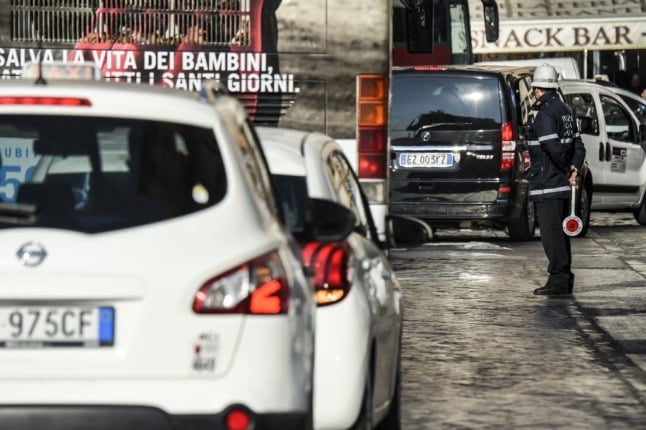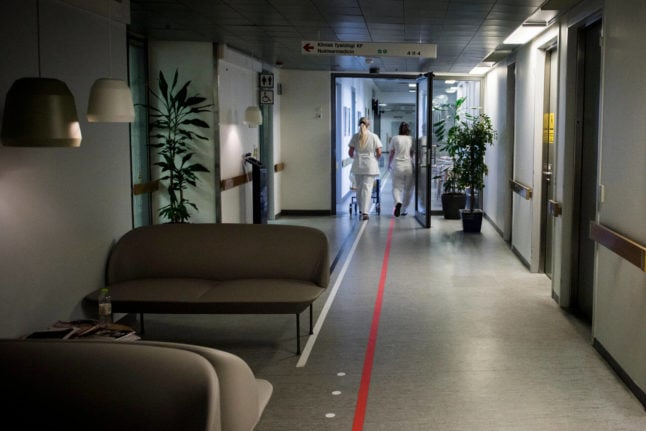Bologna on January 17th became Italy’s first major city to introduce a speed limit of 30km/h on 70 percent of roads in the city centre under its ‘Città 30’ plan, first announced in 2022, and initially set to come into force by June 2023.
The move made Bologna one of a growing number of European cities, including Paris, Madrid, Brussels, and Bilbao, to bring in a 30km/h limit aimed at improving air quality and road safety.
But the change was met last week with a go-slow protest by Bologna’s taxi drivers and, perhaps more surprisingly, criticism from the Italian transport ministry, which financed the measure.
Matteo Salvini, who is currently serving as Italy’s transport minister, this week pledged to bring in new nationwide rules dictating speed limits in cities that would reverse Bologna’s new rule.
Salvini’s League party has long criticised Bologna’s ‘Città 30’ plan, claiming it would make life harder for residents as well as people working in the city and would create “more traffic and fines”.
OPINION: Italians and their cars are inseparable – will this ever change?
Bologna’s speed limit has sparked a heated debate across Italy, despite the increasingly widespread adoption of such measures in many other cities in Europe and worldwide in recent years.
While Bologna is the biggest Italian city to bring in the measure, it’s not the first – and many more local authorities, including in Rome, are now looking to follow their example in the next few years.
Some 60 smaller cities and towns in Italy have adopted the measure so far, according to Sky TG24, though there is no complete list.
This compares to around 200 French towns and cities to adopt the rule, while in Spain the same limit has applied to 70 percent of all the country’s roads since since May 2021 under nationwide rules, reports LA7.
The first Italian town to experiment with a 30 km/h speed limit was Cesena, south of Bologna, which introduced it in 1998. Since then, the local authority has found that serious accidents have halved, while the number of non-serious ones has remained unchanged.
Olbia, in Sardinia, also famously introduced the speed limit in 2021.
The city of Parma is planning to bring in the same rules from 2024, while the Tuscan capital of Florence approved five 30km/h zones in the city centre earlier this month.
Turin is set to bring in its first 30km/h limits this year as part of its broader plan to improve transport infrastructure, aimed at reducing smog and increasing livability.
READ ALSO: Why electric cars aren’t more popular in Italy
Meanwhile, the mayor of Rome, Roberto Gualtieri, has promised to introduce the limit on 70 percent of the capital’s roads by the end of his mandate, which expires in 2026.
In Milan, while the city council has voted in favour of lower speed limits and other traffic limitations on central roads, it’s not clear when these could come into force.
Milan mayor Beppe Sala this week said a 30 km/h limit would be “impossible” to implement in the Lombardy capital.
And it’s notable that almost all of the cities looking at slowing down traffic are in the north or centre-north of Italy.
There has been little interest reported in the measures further south, where statistics have shown there are a higher number of serious road accidents – though the total number of accidents is in fact higher in the north.
According to the World Health Organisation the risk of death to a pedestrian hit by a car driven at 50 km/h is 80 percent. The risk drops to 10 percent at 30 km/h.
The speed limit on roads in Italian towns and cities is generally 50, and on the autostrade (motorways) it’s up to 130.
Many Italian residents are heavily dependent on cars as their primary mode of transport: Italy has the second-highest rate of car ownership in Europe, with 670 vehicles per 1,000 residents, second only to Luxembourg with 682, according to statistics agency Eurostat.



 Please whitelist us to continue reading.
Please whitelist us to continue reading.
Member comments